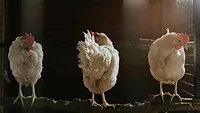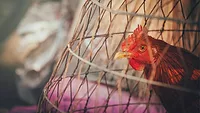Salmonella Less Prevalent in Backyard Poultry Farms Than Commercial Farms, but Multidrug Resistance is Similar

Image credit: Aditya Tma via Pexels
Researchers at NC State University compared poultry broiler farms of various sizes and found higher rates of Salmonella at large commercial operations than at small backyard farms; however, multidrug-resistant (MDR) Salmonella were found in samples from both types of farm, even though antibiotics are not used in backyard farming.
The researchers conducted their study to investigate the prevalence of Salmonella in backyard farms (in comparison to commercial farms) because there has been limited research conducted on these small-scale operations despite their growth in popularity as a source of chicken meat in the U.S. The U.S. Centers for Disease Control and Prevention (CDC) have also issued warnings about Salmonella outbreaks linked to backyard poultry farms in recent years.
For the study, the researchers collected cecal and environmental (i.e., litter, soil, and feeder) samples from ten backyard broiler flocks and ten commercial broiler flocks, with backyard flock sizes ranging between 22 and 1,000 birds, and the largest commercial flock comprising tens of thousands of birds. All backyard flocks lived outdoors, whereas commercial flocks lived indoors. The researchers also sampled compost on backyard farms. Samples were collected at each visit on days 10, 31, and 52 of production for backyard farms and days 10, 24, and 38 of production for commercial farms.
Overall, Salmonella was less prevalent on backyard farms than in commercial operations, with samples testing positive for the pathogen at rates of 19.1 percent and 52.3 percent, respectively. S. Kentucky sequence type 152 was the most common serotype found in both types of farm.
At the same time, the proportion of MDR Salmonella (resistant to three or more antibiotic classes) in backyard farms and commercial farms were not significantly different, but ciprofloxacin- and nalidixic acid-resistant and intermediate isolates were more prevalent in commercial samples (33 percent) than backyard samples (1 percent). Additionally, plasmids associated with MDR were found in S. Kentucky and S. Infantis isolates. The researchers emphasize the need to understand the selection pressures in disseminating megaplasmids in MDR Salmonella in distinct broiler production systems.
Looking for quick answers on food safety topics?
Try Ask FSM, our new smart AI search tool.
Ask FSM →









